Digitalisation is top-of-mind for decision makers within the Agriculture & Food sector, which is faced with increasing reporting demands and a constant push towards more sustainable practices. Many organisations have therefore started to integrate advanced technologies to remain competitive. Among these technologies, Large Language Models (LLMs) are emerging as transformative tools capable of driving critical improvements in efficiency, sustainability, and reporting processes. This is especially significant for the Agriculture & Food sector, where large amounts of sensor and image data are already collected but can be left untouched due to the complexity of discovering valuable statistical patterns.
As consultants specialised in data and AI, we are witnessing this transition firsthand and recognise both the risks and potential of LLMs. With this article we hope to provide background on LLMs, inform organisations of the differences between LLMs and other data tools, and discuss a diverse set of applications within the sector to inspire.
Understanding and Training Large Language Models (LLMs)
LLMs are a type of AI that have been designed to understand, generate, and translate data sources such as human languages. These models are built using deep learning techniques and are trained on vast amounts of data. This training allows them to learn the statistical patterns and structures of any language and enables them to predict the next word in a sentence or to generate coherent and contextually relevant text based on specific prompts.
Until now, the major focus of LLM implementation has been on human language and text, but LLMs can also be trained on any kind of unstructured data, including images, videos, signals, and many others. These are all datapoints that we overwhelmingly see collected and ignored in the Agriculture & Food sector.
Training LLMs involves feeding models large datasets and continuously adjusting the internal weights of the model based on measures of predictive error. This weighting process helps the model improve its accuracy over time but can also cause the inadvertent learning and reproduction of biases present in training datasets.
Fine-Tuning, Applications, and Practical Considerations
Once trained, LLMs can be fine-tuned using specific datasets to address specific challenges; this is how they can perform specialised tasks such as translation and answering questions, among others. However, as consultants we generally advise clients to carefully implement verification processes since LLM decision-making processes are often opaque, thereby making it difficult to understand how an LLM arrives at a given output.
In summary, LLMs are powerful tools for processing large amounts of unstructured data and generating human-like responses. However, LLM implementation requires careful management to mitigate inherent risks. In the sections below, we list a variety of LLM initiatives that can be implemented in the Agriculture & Food sector.
LLM Initiatives in Agriculture & Food
1. Supply Chain Optimisation
One of the most compelling applications of LLMs in the Agriculture & Food (A&F) sector involves enhancing supply chain communication. LLMs can automate and optimise interactions between farmers, suppliers, distributors, and retailers. For instance, LLMs can be trained to interpret and respond to natural language queries from different stakeholders, thus providing real-time product availability updates, delivery status estimates, or forecasts of market demand. This level of communication efficiency can provide business insights from available data while limiting the need for data experts and reducing the potential for error and/or miscommunication.
Existing example: A&F organisations are using LLMs to connect to their Inventory Management system so that personnel can query it more efficiently. For example, a Sales team can ask if it is possible to sell a specific quantity of goods or which alternatives are available, while Operations colleagues can ask the same system which parts of the warehouse may need maintenance.
2. Side Stream Matching
By training on existing research papers, LLMs can develop sophisticated algorithms that can match side streams (i.e. waste or by-products produced by an industrial process) with adjacent industries or processes that can use these materials as inputs. This matching can be optimised for factors such as cost, environmental impact, and logistical feasibility.
Existing example: Researchers in the Netherlands are actively using AI to identify how to upcycle materials and discover new side stream matches. Once enough relevant data has been scraped, collected, and labelled, LLMs can help generate new potential matches.
3. Customer Support
Naturally, LLMs can be used in simple chatbots as part of a customer support framework. By allowing access to product data and organisational protocols, LLMs can provide customers with the support they need. A fine-tuned LLM can generate content that is tailored specifically for each customer, providing information such as advice on product fit, product quantity required, and optimal product use. Moreover, unlike human agents LLMs can provide content in any natural language. At the same time, we understand that human contact remains important for the Agriculture & Food sector. Therefore, instead of installing a chatbot for customers to interact with, we can also enhance existing customer support teams by providing agents with information they need via LLM-powered interfaces that can listen in on conversations and provide real-time guidance based on an available internal knowledge base.
Existing example: This year’s winners of the GreenTech Concept Award went to Koppert’s Digital Assistant. They developed a digital assistant that offers personalised pest management support by merging data from growers’ crop management systems and their in-house IPM knowledge.
4. Food Safety and Quality Control (FSQC)
LLMs can also play a crucial role in ensuring food safety and enhancing quality control. For example, they could be used to develop systems that automatically analyse customer feedback or camera footage to identify potential issues with food quality or safety. Additionally, LLMs can further assist with regulatory compliance by keeping track of changes in food safety laws and regulations and informing stakeholders about necessary adjustments in processes or product compositions.
Existing example: Using LLMs to translate and summarise reviews is an apparent quick win. However, some organisations are already exploring more advanced FSQC opportunities, such as detecting early signs of contamination from sensor signals.
5. Recipe Development
The food industry is changing. There is a growing need for developing more sustainable plant-based products and more healthy sugar- or alcohol-free products without compromising on flavour, texture, or price. LLMs can be used to address this need by training models to analyse patterns and to suggest potentially interesting new ingredient combinations. For example, what if we could produce food that tastes exactly like chicken, but can be sustainably sourced from manipulated yeast instead?
Existing example: There is already a proposal for a chatbot that is developed to perform protein-centric and protein-language tasks, that can not only predict natural language but also proteins from a vast pool of candidates.
6. Personalised Nutrition
There are few things as unique to each individual as health and nutrition. Therefore, we also see growing demand for personalised nutrition in the food industry, and here too LLMs offer interesting advantages. For example, LLMs can process individual dietary preferences, medical test results, and health goals to provide personalised dietary recommendations. Moreover, they can be integrated into apps or websites to help consumers make informed choices about their food, aligning with broader trends towards health and wellness.
Existing example: Someone with a plant-based diet may not want to eat more meat when their iron levels are low. Currently, LLMs are being prototyped to interpret medical test results and personal characteristics, such as age, sex, level of activity, and dietary restrictions, to provide full meal plans and supplement advice that matches the individual. If more data about the individual is incorporated, this advice can become better and more accurate.
How LLMs Can Improve the Use of Agronomic Models
Within the agronomy domain, there are increasing applications of models and algorithms designed to improve efficiency, sustainability, and productivity. For example, in precision agriculture, yield prediction models analyse soil, weather, and historical data to forecast crop yields. Similarly, algorithms can process sensor data to assess nutrient levels, helping optimise irrigation and fertilizer use. These predictive models increasingly rely on diverse data sources, including drone images, sensor data, as well as historical research in textual form.
In these cases, LLMs can play a role in understanding, generating, and translating unstructured data sources. This provides agronomic models with additional inputs to improve accuracy, both in development and in data pipelines that feed the models during inference. In these cases, LLMs can play a role by permitting users to query different data sources, improving data accessibility and robustness, and by acting as a human interface tool. For example, LLMs can integrate multimodal data—combining drone imagery with weather reports or historical information —delivering recommendations for crop and soil management that take into account multiple data sources at once.
Two Approaches to Ensure LLM Readiness
When is an organisation ready for complex AI algorithms like LLMs? Although every organisation is different, our approach will often fall in one of two options.
Option one: setting up a strong data foundation
We assess a firms’ data readiness by developing a strategy that encompasses people, technology, data, processes, and organisation. We then create a roadmap that will ensure a strong data foundation. Once we start building on this foundation, the scaling possibilities are endless. This route will prepare an organisation for a more data-driven future and will make it easier to implement AI solutions for years to come.
Option two: use case prototyping
If a firm already has a clear use case and available data, we advise this option. We always begin with a very specific use case designed to clearly add value to the business and develop that solution in a pilot environment. With enough data and the needs of the end-user in mind, we can develop a first pilot solution within weeks. This allows organisations to explore the potential benefits of LLMs without the need for large upfront investments.
If you are interested in exploring either of these options, we invite you to contact us.
How ADC Can Support Your AI Journey
The examples above represent a brief exploration of how LLMs can be implemented within the Agriculture & Food industry, and the variety of use cases highlights their potential and transformative power. We hope to demonstrate that the adoption of LLMs can be a game-changer for this sector.
At ADC, we support organisations by setting up clear data strategies designed to leverage the power of data and AI. If you share our commitment to leveraging cutting-edge technology to solve real-world problems and would like to discuss your options, we invite you to reach out to our Domain Expert in Agriculture & Food, William Hughes.

Stay Updated
Interested in the latest case studies, insightful blog articles, and upcoming events? Subscribe to our monthly data & AI newsletter below!







